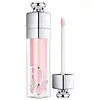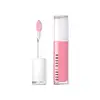What's inside
What's inside
 Key Ingredients
Key Ingredients

 Benefits
Benefits

 Concerns
Concerns

 Ingredients Side-by-side
Ingredients Side-by-side

Polyglyceryl-2 Triisostearate
EmulsifyingHelianthus Annuus Seed Oil
EmollientHydrogenated Castor Oil Dimer Dilinoleate
Skin ConditioningPhytosteryl/Octyldodecyl Lauroyl Glutamate
Skin ConditioningJojoba Esters
EmollientPolyglyceryl-2 Isostearate/Dimer Dilinoleate Copolymer
EmollientEuphorbia Cerifera Wax
Behenyl Behenate
EmollientHelianthus Annuus Seed Wax
Skin ConditioningButyrospermum Parkii Butter
Skin ConditioningOryza Sativa Bran Wax
Skin ConditioningCaprylic/Capric Triglyceride
MaskingParfum
MaskingButyrospermum Parkii Butter Unsaponifiables
Skin ConditioningDiisostearyl Malate
EmollientPrunus Avium Seed Oil
EmollientTrimethylolpropane Triisostearate
EmollientTocopherol
AntioxidantEthyl Vanillin
MaskingAscorbyl Palmitate
AntioxidantUndaria Pinnatifida Extract
Skin ConditioningPropyl Gallate
AntioxidantCI 77891
Cosmetic ColorantCI 77491
Cosmetic ColorantCI 77499
Cosmetic ColorantCI 45380
Cosmetic ColorantCI 15985
Cosmetic ColorantCI 15850
Cosmetic ColorantCI 42090
Cosmetic ColorantPolyglyceryl-2 Triisostearate, Helianthus Annuus Seed Oil, Hydrogenated Castor Oil Dimer Dilinoleate, Phytosteryl/Octyldodecyl Lauroyl Glutamate, Jojoba Esters, Polyglyceryl-2 Isostearate/Dimer Dilinoleate Copolymer, Euphorbia Cerifera Wax, Behenyl Behenate, Helianthus Annuus Seed Wax, Butyrospermum Parkii Butter, Oryza Sativa Bran Wax, Caprylic/Capric Triglyceride, Parfum, Butyrospermum Parkii Butter Unsaponifiables, Diisostearyl Malate, Prunus Avium Seed Oil, Trimethylolpropane Triisostearate, Tocopherol, Ethyl Vanillin, Ascorbyl Palmitate, Undaria Pinnatifida Extract, Propyl Gallate, CI 77891, CI 77491, CI 77499, CI 45380, CI 15985, CI 15850, CI 42090
Hydrogenated Polyisobutene
EmollientOctyldodecanol
EmollientDextrin Palmitate
EmulsifyingLimnanthes Alba Seed Oil
Skin ConditioningDiisostearyl Malate
EmollientIsocetyl Alcohol
EmollientTheobroma Cacao Seed Butter
EmollientTriisostearyl Citrate
EmollientCaprylic/Capric Triglyceride
MaskingButyrospermum Parkii Butter
Skin ConditioningEthylene/Propylene/Styrene Copolymer
Pentaerythrityl Tetraisostearate
EmollientSodium Hyaluronate
HumectantPhoenix Dactylifera Fruit Extract
EmollientSalicornia Herbacea Extract
Skin ConditioningButyrospermum Parkii Butter Unsaponifiables
Skin ConditioningCitrus Grandis Peel Oil
MaskingRicinus Communis Seed Oil
MaskingOlea Europaea Fruit Oil
MaskingPersea Gratissima Oil
Skin ConditioningSimmondsia Chinensis Seed Oil
EmollientCamellia Japonica Seed Oil
EmollientHydrogenated Castor Oil
EmollientBrassica Campestris Sterols
EmollientCholesterol
EmollientCeramide Ng
Skin ConditioningTocopheryl Acetate
AntioxidantTocopherol
AntioxidantLactic Acid
BufferingPalmitoyl Tripeptide-1
Skin ConditioningPalmitoyl Tetrapeptide-7
Skin ConditioningC18-36 Acid Triglyceride
EmollientC18-36 Acid Glycol Ester
EmollientPhytosteryl/Octyldodecyl Lauroyl Glutamate
Skin ConditioningTribehenin
EmollientPhytosterols
Skin ConditioningEthylhexyl Palmitate
EmollientPolybutene
C12-15 Alkyl Benzoate
AntimicrobialPolyglyceryl-6 Polyricinoleate
EmulsifyingAcetyl Glucosamine
Skin ConditioningCaprylyl Glycol
EmollientCopernicia Cerifera Wax
Silica
AbrasiveButylene/Ethylene/Styrene Copolymer
Sorbitan Isostearate
EmulsifyingSorbitan Laurate
EmulsifyingSorbitan Oleate
EmulsifyingLimonene
PerfumingAscorbyl Palmitate
AntioxidantBHT
AntioxidantMica
Cosmetic ColorantCI 77891
Cosmetic ColorantCI 77491
Cosmetic ColorantCI 77492
Cosmetic ColorantCI 77499
Cosmetic ColorantCI 77163
Cosmetic ColorantCI 42090
Cosmetic ColorantCI 77400
Cosmetic ColorantCI 75470
Cosmetic ColorantCI 77742
Cosmetic ColorantCI 45370
Cosmetic ColorantCI 15850
Cosmetic ColorantCI 45380
Cosmetic ColorantCI 45410
Cosmetic ColorantCI 73360
Cosmetic ColorantCI 17200
Cosmetic ColorantCI 19140
Cosmetic ColorantCI 15985
Cosmetic ColorantHydrogenated Polyisobutene, Octyldodecanol, Dextrin Palmitate, Limnanthes Alba Seed Oil, Diisostearyl Malate, Isocetyl Alcohol, Theobroma Cacao Seed Butter, Triisostearyl Citrate, Caprylic/Capric Triglyceride, Butyrospermum Parkii Butter, Ethylene/Propylene/Styrene Copolymer, Pentaerythrityl Tetraisostearate, Sodium Hyaluronate, Phoenix Dactylifera Fruit Extract, Salicornia Herbacea Extract, Butyrospermum Parkii Butter Unsaponifiables, Citrus Grandis Peel Oil, Ricinus Communis Seed Oil, Olea Europaea Fruit Oil, Persea Gratissima Oil, Simmondsia Chinensis Seed Oil, Camellia Japonica Seed Oil, Hydrogenated Castor Oil, Brassica Campestris Sterols, Cholesterol, Ceramide Ng, Tocopheryl Acetate, Tocopherol, Lactic Acid, Palmitoyl Tripeptide-1, Palmitoyl Tetrapeptide-7, C18-36 Acid Triglyceride, C18-36 Acid Glycol Ester, Phytosteryl/Octyldodecyl Lauroyl Glutamate, Tribehenin, Phytosterols, Ethylhexyl Palmitate, Polybutene, C12-15 Alkyl Benzoate, Polyglyceryl-6 Polyricinoleate, Acetyl Glucosamine, Caprylyl Glycol, Copernicia Cerifera Wax, Silica, Butylene/Ethylene/Styrene Copolymer, Sorbitan Isostearate, Sorbitan Laurate, Sorbitan Oleate, Limonene, Ascorbyl Palmitate, BHT, Mica, CI 77891, CI 77491, CI 77492, CI 77499, CI 77163, CI 42090, CI 77400, CI 75470, CI 77742, CI 45370, CI 15850, CI 45380, CI 45410, CI 73360, CI 17200, CI 19140, CI 15985
 Reviews
Reviews

Ingredients Explained
These ingredients are found in both products.
Ingredients higher up in an ingredient list are typically present in a larger amount.
Ascorbyl Palmitate is created by combining pure Vitamin C and palmitic acid. It is an antioxidant and helps reduce hyperpigmentation.
This ingredient is a more stable version of Vitamin C, meaning it does not disintegrate as quickly when exposed to sunlight. However, studies show it does not penetrate skin as well as pure Vitamin C.
Ascorbyl Palmitate is oil soluble.
Read more about other types of Vitamin C:
Learn more about Ascorbyl PalmitateThis ingredient is also known as shea butter. It is an effective skin hydrator and emollient.
Emollients help soothe and soften your skin. It does this by creating a protective film on your skin. This barrier helps trap moisture and keeps your skin hydrated. Emollients may be effective at treating dry or itchy skin.
Shea butter is rich in antioxidants. Antioxidants help fight free-radicals, or molecules that may harm the body. It is also full of fatty acids including stearic acid and linoleic acid. These acids help replenish the skin and keep skin moisturized.
While Shea Butter has an SPF rating of about 3-4, it is not a sunscreen replacement.
Shea butter may not be fungal acne safe. We recommend speaking with a professional if you have any concerns.
Learn more about Butyrospermum Parkii ButterButyrospermum Parkii Butter Unsaponifiables comes from shea butter.
Unsaponifiables means the butter is not saponified, or it has not been turned into soap using an alkali reaction.
This ingredient contains Vitamin E, sterols, and many antioxidants. These compounds help hydate your skin.
Learn more about Butyrospermum Parkii Butter UnsaponifiablesThis ingredient is an emollient, solvent, and texture enhancer. It is considered a skin-softener by helping the skin prevent moisture loss.
It helps thicken a product's formula and makes it easier to spread by dissolving clumping compounds.
Caprylic Triglyceride is made by combining glycerin with coconut oil, forming a clear liquid.
While there is an assumption Caprylic Triglyceride can clog pores due to it being derived from coconut oil, there is no research supporting this.
Learn more about Caprylic/Capric TriglycerideCi 15850 is the pigment color red. It is an azo dye and created synthetically.
Azo dyes need to be thoroughly purified before use. This allows them to be more stable and longer-lasting.
This ingredient is common in foundations, lipsticks, and blushes. This color is described as brown/orangey red.
It has many secondary names such as Red 6 and Red 7. According to a manufacturer, Red 6 usually contains aluminum.
Learn more about CI 15850Ci 15985 is a dye made from petroleum. It is synthetically created and approved by the FDA for use in foods and cosmetics.
The color of this dye is orange/yellow.
This ingredient can be found in makeup, sun care, and skincare.
Learn more about CI 15985Ci 42090 is a synthetic dye created from petroleum. It is used to give a bright blue color to cosmetics, medicine, and food.
Ci 45380 is a synthetic dye that comes from coal or tar sources. Due to this, it is often used in small quantities.
A common name for this dye is Red 22. Red 22 imparts a warm reddish color.
Similar to Red 27, this dye changes color based on pH and moisture levels.
This dye is colorless when dry but turns pink between pH levels 0.0 to ~3.0.
Learn more about CI 45380Ci 77491 is also hydrated iron III oxide. It's sole purpose is to give a red/pink hue to products.
Iron III oxides are classified as inorganic chemicals for coloring.
Synthetically created Ci 77491 is considered safer than those naturally found. This is because the synthetically created version may contain less impurities. Iron oxides are generally non-toxic and non-allergenic.
Learn more about CI 77491Ci 77499 is also hydrated iron III oxide. It is created from mixing red and black iron oxides. This helps give shades of darkness to a product.
Iron III oxides are classified as inorganic chemicals for coloring.
Ci 77891 is a white pigment from Titanium dioxide. It is naturally found in minerals such as rutile and ilmenite.
It's main function is to add a white color to cosmetics. It can also be mixed with other colors to create different shades.
Ci 77891 is commonly found in sunscreens due to its ability to block UV rays.
Learn more about CI 77891Diisostearyl Malate is an emollient and most often used in lip products. It comes from isostearyl alcohol, a fatty acid, and malic acid, an AHA.
As an emollient, Diisostearyl Malate helps create a thin film on your skin to trap moisture in. This helps keep your skin soft and smooth.
We don't have a description for Phytosteryl/Octyldodecyl Lauroyl Glutamate yet.
Tocopherol (also known as Vitamin E) is a common antioxidant used to help protect the skin from free-radicals and strengthen the skin barrier. It's also fat soluble - this means our skin is great at absorbing it.
Vitamin E also helps keep your natural skin lipids healthy. Your lipid skin barrier naturally consists of lipids, ceramides, and fatty acids. Vitamin E offers extra protection for your skin’s lipid barrier, keeping your skin healthy and nourished.
Another benefit is a bit of UV protection. Vitamin E helps reduce the damage caused by UVB rays. (It should not replace your sunscreen). Combining it with Vitamin C can decrease sunburned cells and hyperpigmentation after UV exposure.
You might have noticed Vitamin E + C often paired together. This is because it is great at stabilizing Vitamin C. Using the two together helps increase the effectiveness of both ingredients.
There are often claims that Vitamin E can reduce/prevent scarring, but these claims haven't been confirmed by scientific research.
Learn more about Tocopherol